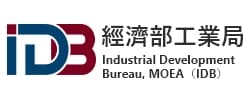Case Studies/ Government Project Management
Building context/challenges.
► Information sources are diverse, and team information is inconsistent.
After relying on personnel from different units to provide information for budget control, contract progress monitoring, and execution control of nearly 100 technology projects annually, significant manpower is still required to manually organize the data. However, when some information is updated, there is no synchronous update for all project office personnel, resulting in inconsistent information among project teams and complex management.
► Budget allocation methods vary, making it difficult to grasp budget fluctuations and allocation trends.
The budgeting process for scientific projects, starting from strategic planning, through resource allocation, initial review, approval, and execution fund disbursement, is a complex and time-consuming process spanning several years. Manual calculation and organization are already time-consuming tasks, and it's even more challenging to accurately grasp budget fluctuations and allocation trends from a macro perspective.
► Manual consolidation of reports is time-consuming, and the demand for reports keeps changing.
To meet the diverse management needs of various supervisors, it takes a considerable amount of time each time to consolidate the reports required by them. However, after the reports are provided, different supervisors often request reports from different perspectives. Since this process is manual, it takes several working days to provide them again, which is quite inefficient.
► Lean staffing and multitasking make knowledge transfer challenging.
The unit responsible for managing technology projects operates with limited manpower, yet it faces the arduous task of managing the budgets, execution, and performance of at least 100 technology projects annually. Therefore, each staff member must be familiar with all operational processes and methods to fulfill their duties. However, when there is a staff turnover, it takes at least six months to a year to train new personnel, leading to knowledge gaps.
Benefits of implementation.
-
Implementing real-time information exchange in the execution and management units can increase resource utilization efficiency by 20% to 30%.
After adopting the Monmouth Technologies ezteamwork™ project platform, report preparation now takes only a few seconds. Unlike the past, where it took a lot of time to prepare various management reports required by the technology project management units, now it only takes one click to generate the most up-to-date and accurate management information. The flexible report setting mechanism allows users to generate various required management reports instantly by simply checking boxes, reducing the manpower and potential errors previously required for manual statistics. The new management platform operation mechanism will effectively streamline the entire technology project management process within the Industrial Bureau, and it will also increase the efficiency of resource allocation and utilization of the overall technology projects by about 20% to 30%, achieving the synergistic effect of overall planning and consolidation management.
-
Implementing the PDCA* management and knowledge transfer process in sync has become the benchmark for government project execution and management.
The focus of the first phase of this project is to complete the establishment of budget management, procurement, and acceptance management processes and systems. Currently, the implementation has been successfully completed and launched, with ongoing planning and implementation of project management, fund management, and performance tracking systems. This aims to enhance the completeness of project management processes and platform mechanisms, accelerate the achievement of performance in executing projects by the Industrial Development Bureau of the Ministry of Economic Affairs, and implement the government's goal of promoting knowledge management, thus becoming a model for project management in the public sector.
Note: "PDCA (Plan-Do-Check-Act)" cycle is a quality management cycle that involves activities in planning, executing, checking, and acting to ensure the achievement of reliability goals and promote continuous improvement in quality work.
The Industrial Development Bureau of the Ministry of Economic Affairs, established in 1990, primarily undertakes tasks such as the "Promotion of Industrial Science and Technology Research and Development and Joint Commendation Program" by the Department of Technology of the Ministry of Economic Affairs, the "Review of Technology for Promoting Industry-University Research and Development Funds" by the Industrial Development Bureau of the Ministry of Economic Affairs, the "Science and Technology Project Plan Review and Management Plan," and the "Effectiveness Tracking and Evaluation Research Project for Leading New Product Development Projects" by the Industrial Technology Research Institute, and the "Promotion Plan for the Dissemination of Defense Technology Research and Development Achievements" by the National Defense Research Institute, as well as the "Assistance Program for Project Procurement Operations" by the Small and Medium Enterprise Administration of the Ministry of Economic Affairs.
Industry category.
Government agency
Solutions
Government Project Management Solution
Related cases
Small and Medium Enterprise and Startup Administration, Ministry of Economic Affairs
Establishing a systematic issue management mechanism

